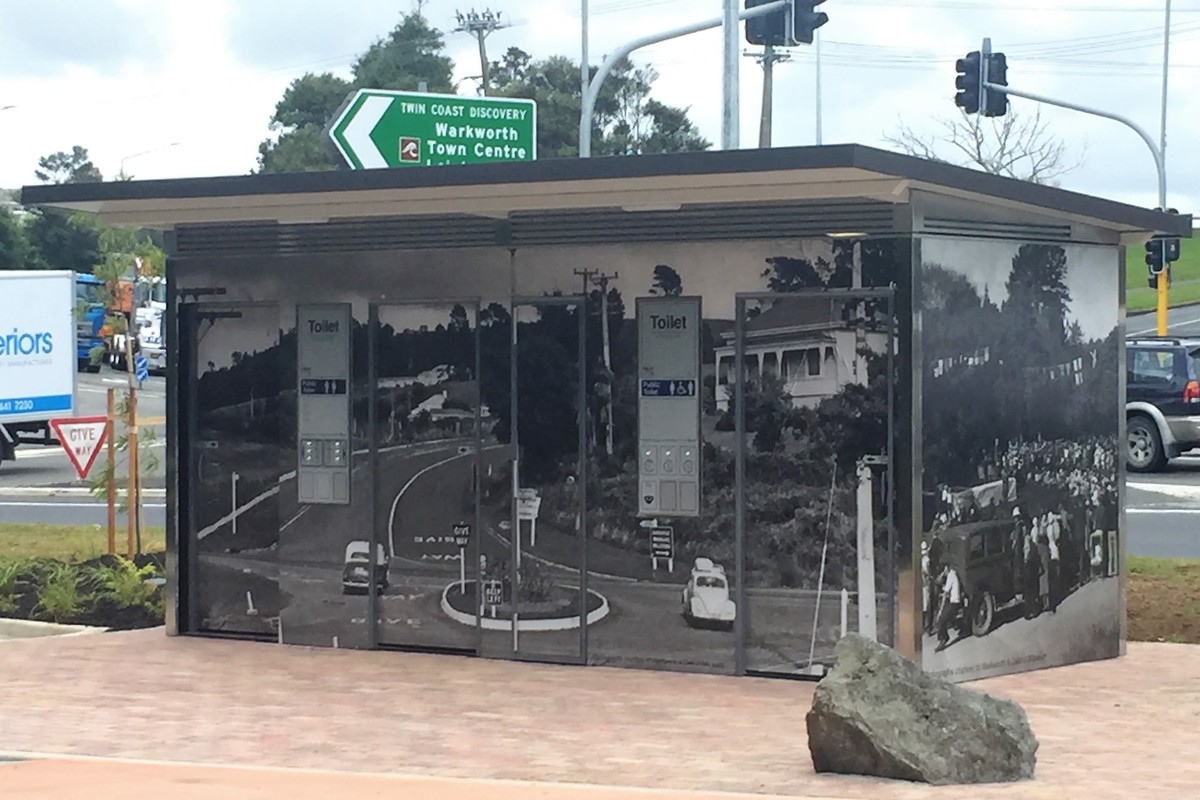Kowhai Park - Warkworth
1 Dec 2017
Exeloo is proud to announce the commissioning of the Kowhai Park Rest Area Jupiter Triple Cubicle unit in Warkworth.
Part of the Kowhai Park Cementworks Walkway, the rest area park was upgraded to include the demolition of an outdated pavilion styled toilet block and the installation of a new Exeloo Jupiter Triple cubicle public toilet. This rest area sits at the junction of State Highway 1 and the busy cross road Matakana turnoff and the new toilet is adorned with imagery from the local library showing the same junction in 1953.
Peter Bilton from Auckland Council oversaw the project "This project was a delight to be involved in the upgrade improving an important tourist rest area which incorporates an RV dump station. Coordination with the Rodney Local Board was excellent as community involvement is crucial to the success of projects such at Kowhai Park".
Brent Bailey from the Rodney Local Board was full of praise for the new addition. "The park has seen a huge upturn in visitors, bringing the public toilet out from under the trees and making it a centrepiece with some creative and historic artworks and has drawn praise from residents and visitors alike. The Cementworks Walkway forms an important historical link to the areas past and we are very proud to work in conjunction with the Lions and Forest and Bird to deliver this as part of this historical walk."
The Warkworth Cementworks Walkway seeks to establish a 2.2km walking track from Warkworth to the Cementworks - similar to a track used by workers when the plant was operating. Warkworth Lions and Forest and Bird have already completed and planted over half the length of the track with native trees. Forest and Bird has just received $9000 from the Rodney Local Board to carry out construction of a critical link comprising of a track and a short boardwalk.
The Warkworth Cementworks were the first Cementworks in the southern hemisphere. They started as lime works but Nathaniel Wilson upgraded it to produce cement from the 1880's. The plant expanded to its present size by 1918 but was then replaced by a new plant at Whangarei and eventually closed in 1929.

